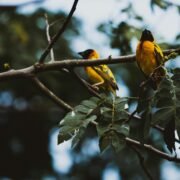
Culture in Uganda and Rwanda: Rhythm, Resilience, and Roots
Tucked into the beating heart of East Africa, Uganda and Rwanda are lands of deep heritage, natural beauty, and cultural vibrancy that few places in the world can rival. While the region is often known for its wildlife the gorillas, the birds, the lush rainforests the true soul of Uganda and Rwanda lies in their people. These are countries shaped by tradition, tempered by history, and held together by community, story, and song.
Despite their proximity, Uganda and Rwanda are culturally distinct. Uganda is a mosaic of more than 50 ethnic groups, each with unique languages, music, foods, and belief systems. Rwanda, though more culturally homogeneous, carries an intense cultural legacy defined by unity, grace, and resilience. In both nations, ancient traditions coexist with modern progress, and every handshake, dance step, and word spoken is steeped in meaning. Here’s an immersive look into what makes the culture of Uganda and Rwanda so special and the climatic and cultural conditions that shape daily life in these extraordinary countries.
🌦 Climate: Life in Tune with Nature
Uganda and Rwanda both straddle the equator, which gifts them with year-round growing seasons, fertile soils, and vibrant vegetation. But thanks to variations in altitude, the climates are not oppressively hot. Instead, they offer a balance of warmth and coolness that nourishes both the land and the people.
Uganda’s landscape ranges from lush forests in the west to expansive savannah in the north and east. The country experiences two rainy seasons March to May and September to November which define the rhythms of agriculture, festivals, and even spirituality. When the rains begin, planting starts. When the skies clear, celebrations bloom.
Rwanda, affectionately known as the “Land of a Thousand Hills,” boasts cooler temperatures due to its higher elevation. The climate here feels almost spring-like throughout the year, especially in mountainous regions like Musanze or Nyungwe. The rains gentle and consistent bring life to its terraced hillsides, tea plantations, and dense forests.
What many visitors don’t know is how deeply interwoven climate is with culture in both nations. In rural areas, weather isn’t just a topic of small talk it’s a spiritual signal. For instance, elders still interpret the call of birds or the flowering of specific trees to predict the coming of rains. And across Uganda and Rwanda, rainfall is seen not as an inconvenience, but as a blessing a reason to give thanks.
Ugandan Culture: Diversity in Unity
Uganda’s cultural landscape is shaped by its incredible ethnic diversity. With over 50 ethnic groups and 40+ languages, the country is a cultural kaleidoscope. From the Baganda in the central region to the Banyankole, Basoga, Acholi, Iteso, and Bakiga, each group carries unique customs that blend into the national identity.
The Baganda Kingdom, based around Kampala, is one of the oldest and most organised monarchies in East Africa. The Kabaka (king) still holds great cultural influence. The clan system, totem animals, and family lineages in Buganda create an elaborate network of respect, taboos, and belonging. One fascinating rule? You’re never allowed to marry someone from your clan, even if you’re not related it’s believed to weaken the clan’s integrity.
Music and dance are at the core of social life. In Buganda, the Bakisimba drum rhythm is performed at weddings and cultural ceremonies, celebrating fertility and gratitude. Among the Banyankole in western Uganda, the ekitaagururo dance is a high-energy display of footwork that honours cattle and prosperity.
Did you know? In parts of Uganda, twins are considered sacred, and unique rituals are performed at their birth. Special names are given to twins (like “Babirye” for the older twin and “Nakato” for the younger among girls), and celebrations often include music, food, and blessings from elders.
🎶 Rwandan Culture: Elegance, Grace, and Healing
Rwanda’s culture is often described as graceful and unified, shaped by both the beauty of the land and the strength of its people. The country’s tragic history, particularly the 1994 genocide, has left a profound imprint but it has also inspired a cultural rebirth focused on unity, healing, and national pride.
Intore dance is one of Rwanda’s most iconic expressions. Dancers move with precision, agility, and purpose, wearing headdresses and holding spears not as weapons, but as symbols of strength and grace. The movements tell stories of courage, courtship, and kingship, accompanied by hypnotic drumming that echoes through the hills.
Another striking cultural tradition is umuganda, a monthly community work day observed across the country. On the last Saturday of every month, shops close, traffic slows, and citizens gather to clean streets, plant trees, or improve public spaces. It’s a unique practice that blends civic pride with traditional values of togetherness.
Rwanda’s traditional clothing includes the imishanana a draped wrap skirt worn by women during ceremonies and dances. Paired with beads and braided hairstyles, it creates an image of timeless beauty. Men wear long tunics with sashes, particularly during national events or weddings.
Rwanda has one of the highest percentages of women in government in the world, with over 60% of parliamentary seats held by women. This cultural shift toward inclusivity began during post-genocide rebuilding and has transformed gender dynamics in education, employment, and politics.
💬 Language and Communication
Language is a mirror of culture and both Uganda and Rwanda are linguistically rich. In Uganda, English and Swahili are official languages, but most people first speak local tongues like Luganda, Runyankore, Ateso, or Acholi. Each language carries its own proverbs, humour, and poetry, making communication not just functional, but artful.
In Rwanda, nearly everyone speaks Kinyarwanda, a language known for its depth and formality. Even greetings carry deep meaning. “Amakuru?” (What’s the news?) is met with “Ni meza” (All is good), followed by a longer exchange of blessings and well-wishes. The use of indirectness and respect for hierarchy is key in both cultures especially when speaking to elders or community leaders.
A delightful custom? In both countries, nicknames are often given based on personality, birth order, or life events. You might meet someone called “Sanyu” (joy), “Kato” (younger twin), or “Akello” (born after twins).
🌿 Spirituality and Connection to the Land
While Christianity and Islam are the dominant religions in Uganda and Rwanda, traditional beliefs remain deeply embedded, particularly in rural areas. Nature is not just scenery it’s spiritual. Certain trees are sacred. Hills are believed to hold ancestral spirits. Waterfalls and caves are sites of prayer and ritual.
In Uganda, traditional healers and herbalists are still sought out for both physical and emotional ailments. They use bark, roots, and leaves often guided by ancestral knowledge and intuition. Among the Bakiga and Banyankole, the belief in Ebiino (protective spirits or charms) is still quietly practiced.
In Rwanda, ancient beliefs in Imandwa spirits have mostly faded from public life, but elements survive in ceremonies, art, and oral tradition. Cows, especially the long-horned Inyambo, are regarded not just as wealth but as spiritual symbols of grace and abundance. Even today, Rwandan poets write songs about cows, and ceremonial processions feature them with braided horns and symbolic blessings.
🥘 Food, Family, and Festivity
Food in Uganda and Rwanda is simple, seasonal, and symbolic. Meals are often shared from a common dish, reflecting communal living. In Uganda, staple foods include matoke (steamed bananas), posho (maize porridge), millet bread, and groundnut sauce, often served with greens and stewed meats or fish.
In Rwanda, ugali, sweet potatoes, cassava, and beans are common, accompanied by sauces made with groundnuts or leafy greens. Brochettes (meat skewers) are a popular street food, often served with grilled plantains or a local beer.
Food is rarely just nourishment, it’s ceremony. At weddings, baptisms, or coming-of-age events, traditional dishes are prepared with great care, and elders offer blessings before the meal begins.
🌺 The Culture That Lives in the Details
Culture in Uganda and Rwanda is not something you visit. It’s something you feel. It lives in the rhythm of a drum echoing through the hills, in the warmth of shared food, in the humility of greetings, and in the resilience passed from one generation to the next.
Whether you find yourself sitting on a woven mat in a Ugandan village or watching the sunrise over Rwandan tea fields, you’ll notice it, the quiet strength, the joyful hospitality, the balance between tradition and forward movement. And if you listen closely, you’ll realise something even more powerful: these cultures don’t just survive. They sing.




